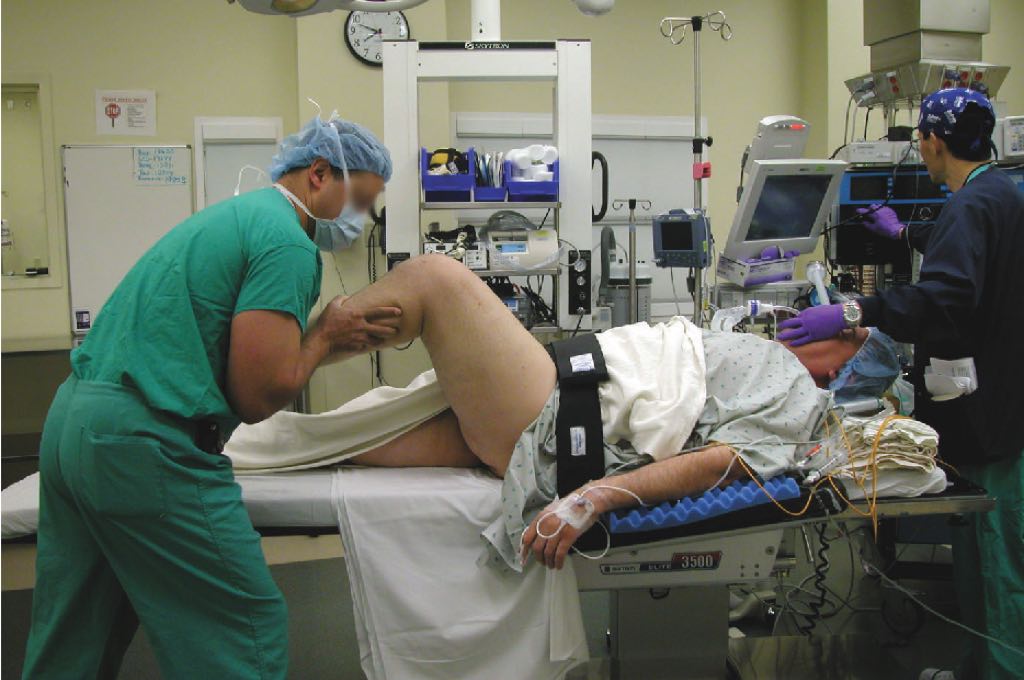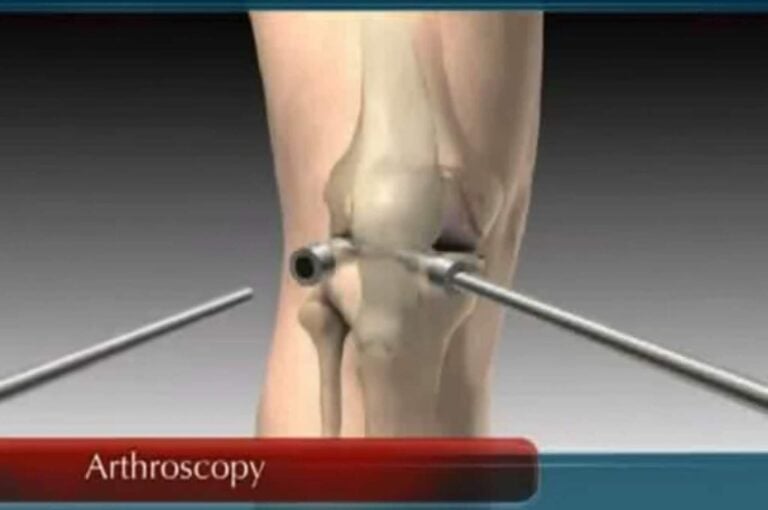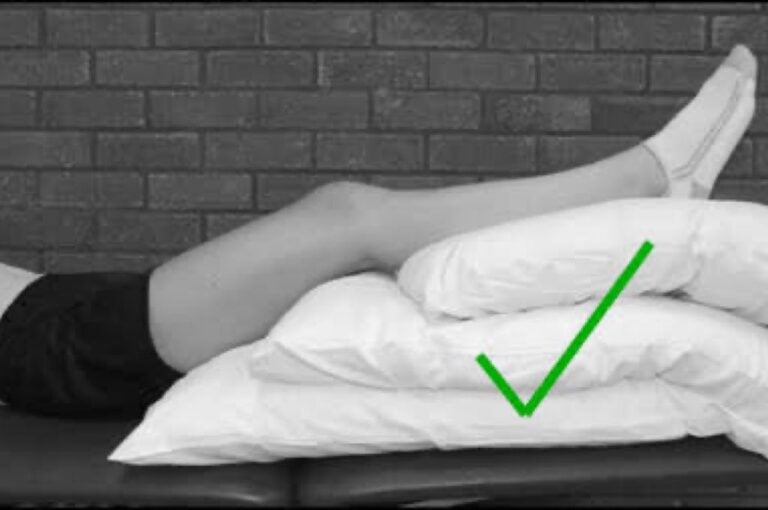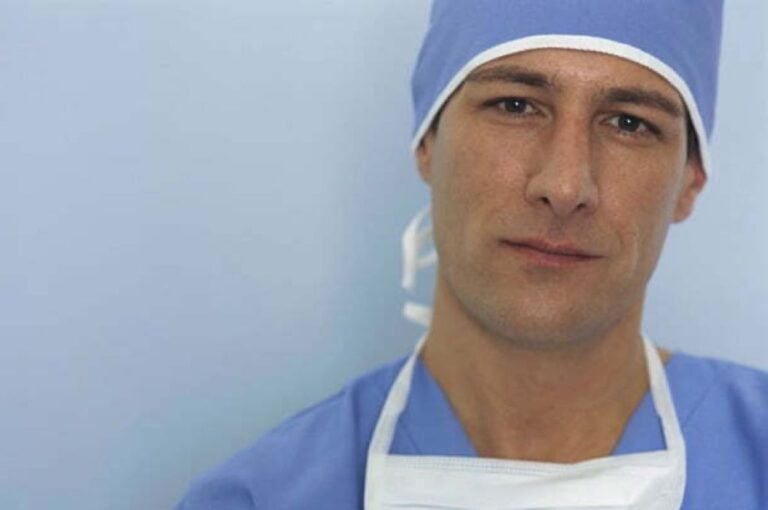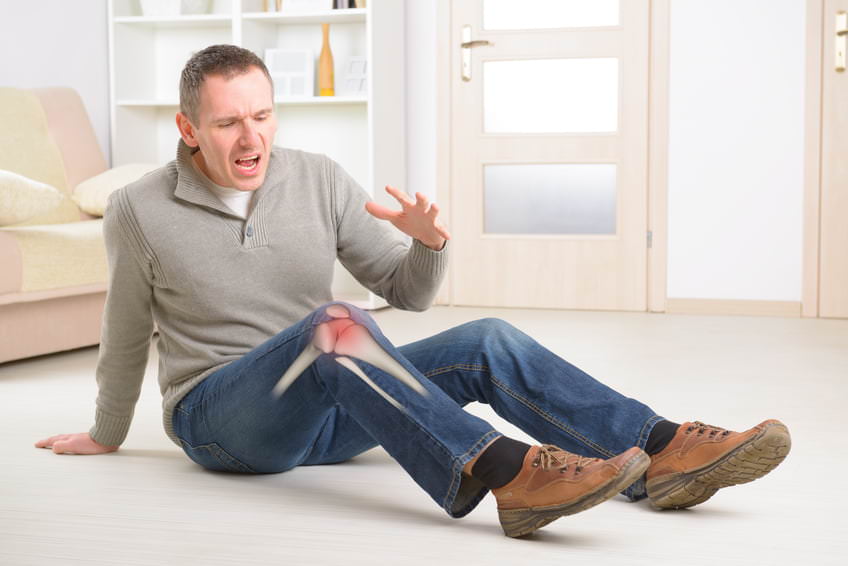Manipulation under Anesthesia is a technique for treating stiffness and poor range of motion following total knee arthroplasty (TKA) or knee revision surgery. Stiffness and decreased range of motion after TKA affects approximately 6 to 7% of patients.1 MUA is a non-surgical procedure performed in a hospital with the patient under general or spinal anesthesia.
During a total knee replacement some interior tissues of the body are exposed to the air causing essential lubricating fluids within the body’s tissues to evaporate. If the fluids are not quickly replenished after surgery, affected muscles which normally glide over each other may bind and form adhesions which can cause pain and greatly limit the ability to move the affected joint.
Light adhesions can often be worked out with physiotherapy and therapeutic massage/manipulation techniques. However if adhesions are large, treatment to free the joint may require orthopedic manipulation under anesthesia. The incidence of adhesions and scar tissue requiring orthopedic MUA is low, occurring in 3.9 – 4.6% of total knee replacements.2,3
MUA procedure
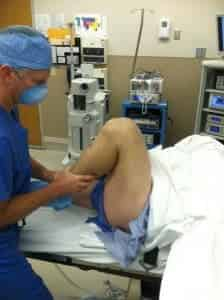
During MUA following knee replacement the patient is positioned on their back and the hip is flexed to 90 degrees. With the leg held close to the knee joint, steady progressive pressure is applied until the surgeon can hear and feel the adhesions breaking away. The knee is held in this position for 20 to 30 seconds. It is then flexed and extended into the maximum position several times.3 When the procedure is complete the patient is usually released to go home the same day although some surgeons prefer to keep the patient overnight to ensure adequate pain management.
Postoperatively, active assisted physical therapy is recommended to keep the joint flexing and retard the formation of new adhesions. A continuous passive motion machine (CPM) may be utilized on some patients to keep the joint flexing.
Some people experience extensive pain following MUA, but many find the pain level average and manageable with icing of the knee and doctor prescribed pain medication. There may be some swelling of the knee area which at first results in poor flexion – which can be unsettling as it can feel as if the procedure was unsuccessful. Within a few weeks of pain management, icing and elevation, the stiffness usually subsides and greater range of movement is experienced.
People who have jobs with low physical demands may be able to return to work a few days following the procedure if the level of pain is manageable.
Risks associated with MUA following TKR
Although extremely rare, complications from MUA are often related to the force used to manipulate the knee resulting in bone fracture or wound rupturing.1 Applying enough force to break the adhesions without breaking bones is a skill and prudent surgeons will caution their patients about this risk. Other considerations which may preclude an individual from undergoing MUA include: osteoporosis or other bone weakening disorder, heart disease, advanced age, circulatory disease, and acute arthritis.
Outcomes of MUA
Most people experience an increase in range of motion after MUA, even though there is some temporarily added muscle soreness. In cases involving muscle adhesions and shortened tissues, there should be a significant change, either immediate or within a few weeks following the procedure. The most important after MUA care is establishing a program which allows the patient to learn how to maintain function and range of motion, regain strength, and prevent future pain and disability.4
Sources
- Alejandro González Della Valle, MD, Alejandro Leali, MD, and Steven Haas, MD, “Etiology and Surgical Interventions for Stiff Total Knee Replacements” https://www.ncbi.nlm.nih.gov/pmc/articles/PMC2504257/
- Ingmar Ipach, Falk Mittag, Julia Lahrmann, Beate Kunze and Torsten Kluba, “Arthrofibrosis after TKA – Influence factors on the absolute flexion and gain in flexion after manipulation under anaesthesia” https://www.biomedcentral.com/1471-2474/12/184
- I. Ipach, R. Schäfer, J. Lahrmann, T. Kluba, “Stiffness after knee arthrotomy: Evaluation of prevalence and results after manipulation under anaesthesia” https://www.em-consulte.com/en/article/288187
- Sean E. Fitzsimmons, MD, Edward A. Vazquez, BS, and Michael J. Bronson, MD, “How to Treat the Stiff Total Knee Arthroplasty?: A Systematic Review” https://www.ncbi.nlm.nih.gov/pmc/articles/PMC2835585/
